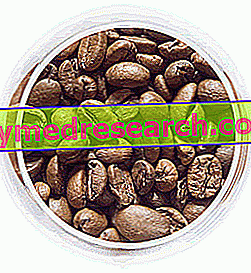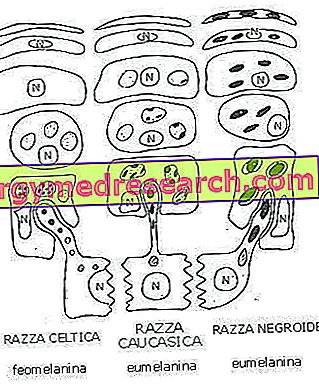
Information on LIPOICO + NAC - KEFORMA
Food supplement based on N Acetyl Cysteine and lipoic acid
FORMAT
60 cps bottle
COMPOSITION
NAC
Lipic acid
Capsule: gelatin
Thickener: starch
Anti-caking agents: Silicon dioxide
One capsule contains: NAC 200 mg; Lipoic acid 200 mg
| A LIPOICO + NAC CAPEU - KEFORMA CONTAINS: | |
| Kcal | 0.8 |
| Protein | 0.06 g |
| Carbohydrates | 0.04 g |
| Grassi | Absent |
N-Acetyl Cysteine 200mg - acetylated form of the amino acid Cysteine, necessary for endogenous glutathione synthesis together with glutamate and glycine. While these two amino acids are present and available in the common diet, cysteine is hardly absorbed in the intestine, thus representing the limiting factor in the synthesis of glutathione. The oral supplementation with NAC therefore makes sense in providing one of the precursors necessary for the synthesis of this powerful antioxidant, also because the bioavailability of the oral form of glutathione is very low, due to digestive and degradative events that seriously compromise its structure and function.

- Direct antioxidant activity;
- Glutathione mediated antioxidant activity.
Considering its functions, N acetyl cysteine has found different therapeutic applications, from degenerative pathologies to paracetamol intoxications, from anti-flu and mucolytic therapies to cancer prevention. In sports it is commonly used for its antioxidant and protective qualities against muscle damage, proving to be effective in reducing the levels of lipofuscin (advanced peroxidation products), creatinkinase (marker of tissue damage) and in increasing the glutathione pull reduced (GSH), active form.
Lipoic Acid 200mg - derived from octanoic acid, is easily absorbed when administered in the form of a food supplement, becoming immediately available at a cellular level due to its chemical-physical properties that allow a rapid crossing of the cellular membrane.
In cells, the lipoate is a cofactor in some key reactions of oxidative metabolism, allowing an improvement in the glucidic and amino acidic energy flow, with particular importance for the muscle of the BCAAs. However, its main application in the field of sports supplementation lies in the antioxidant power, which it is able to sustain directly both in the oxidized and reduced form, and in the regenerating power of other antioxidants such as vitamin E, vitamin C and glutathione.
Also proving effective in promoting cellular glucose uptake, assisting the insulin signal, it has been successfully used in the laboratory to induce weight loss in guinea pigs. However, the mechanism by which this phenomenon is initiated is still not entirely clear, given the presence of studies that underline on one hand the anorectic effect, and on the other an inhibitory effect on protein synthesis.
Supplementation with lipoic acid is successfully used in the treatment of degenerative diseases, induced by oxidative stress, such as diabetic neuropathy, atherosclerosis and neurodegenerative pathologies.
Like other oxidants, it has also been shown to be effective in reducing markers of oxidative damage in healthy individuals subjected to physical exercise.
Recommended use by the company - LIPOICO + NAC - KEFORMA
1 cps per day during meals
Use in sports practice LIPOICO + NAC - KEFORMA
Various studies have tested the effectiveness of supplementation with NAC in sports practice.
The dosages found in these studies start at 600mg / day and reach 1.2 / 1.8g per day on training days. In the same the administration times vary from 2 to 6 weeks.
For lipoic acid, on the other hand, effective dosages to counteract oxidative damage occurred between 200/400 mg per day, rising to 600mg / day in individuals subjected to intense physical exercise.
Generally the administration is recommended during meals, but scientific evidences show a maximum absorption of lipoic acid on an empty stomach.
Taking into account the absorption times (2 / 3h) for the NAC and the lipoic acid (1.5 h), protocols could be developed, able to increase the antioxidant power, during the training phase.
Product features - LIPOICO + NAC - KEFORMA
The synergy between the two antioxidants mutually enhances their functions, as demonstrated by numerous studies. The simultaneous supplementation of 1200mg / day of NAC and 600mg / day of lipoic acid in healthy individuals, subjected to physical activity, showed a 30% decrease in oxidative markers and a net increase in reduced glutathione levels, thus highlighting an efficacy in the reduction of oxidative damage induced by intense physical exercise.
Furthermore, studies on rats have underlined the ability of these two molecules, if taken synergistically, to counteract the mitochondrial degeneration associated with neurodegenerative pathologies such as Alzheimer's, preserving the oxidative capacities of the cell.
Rationale for use - LIPOICO + NAC - KEFORMA
Numerous studies show that both molecules, both in synergy and alone, can effectively counteract the stressful events to which the body, and in particular the muscle, is subjected during physical activity. The various authors, on the other hand, are in contrast with respect to the possibility of improving athletic performance and reducing the feeling of fatigue.
The absence of studies supporting the weight loss hypothesis (fat loss), associated with supplementation with lipoic acid and acetyl cysteine in healthy men, should be reiterated, although different research groups are investigating the cellular events induced by 'lipoic acid, and probably involved in the inhibition of lipogenetic processes and in the improvement of oxidative processes.
LIPOIC + NAC - KEFORMA side effects
No particular side effects of oral supplementation with NAC have been recorded, even for prolonged periods.
However, strict medical supervision is required in the case of asthmatic individuals, with diseases of the respiratory tract or the gastrointestinal tract.
Intake of the product may occasionally be followed by nausea, vomiting or hypersensitivity reactions such as hives and bronchospasm.
For lipoic acid; at doses higher than 1200mg / day, side effects such as itching, tingling and gastrointestinal tract infections (diarrhea, vomiting and cramps) have been documented.
Interactions
N acetyl cysteine can interfere with various types of antibiotics if taken at the same time.
For lipoic acid: Pharmacological Interactions - given the ability of lipoic acid to activate intracellular glucose intake, the simultaneous intake of hypoglycemic agents could produce a marked drop in blood sugar; you should therefore consult your doctor before use.
Food Interactions - given the structure very similar to biotin, the two molecules could compete for the membrane transporter.
This article, elaborated on the critical re-reading of scientific articles, university texts and common practice, is for informational purposes only and is therefore not a medical prescription. It is therefore always necessary to consult your doctor, nutritionist or pharmacist before starting to use any kind of supplement . Further information on the critical analysis of LIPOICO + NAC - KEFORMA.
| BIBLIOGRAPHY |
Am Fam Physician. 2009 Aug 1; 80 (3): 265-9. N-acetylcysteine: multiple clinical applications.Millea PJ. Lipoic acid and N-acetyl cysteine decrease mitochondrial-related oxidative stress in Alzheimer disease patient fibroblasts. Moreira PI, Harris PL, Zhu X, Santos MS, Oliveira CR, Smith MA, Perry G eid MB, Stokic DS, Koch SM, et al. N-Acetylcysteine inhibits muscle fatigue in humans. J Clin Invest. 1994; 94: 2468-2474Matuszczak Y, Farid M, Jones J, et al. Effect of n-acetylcysteine on glutathione oxidation and fatigue during handgrip exercise. Muscle Nerve. 2005; 32: 633-638. doi: 10.1002 / mus.20385. The antioxidant role of glutathione and N-acetyl-cysteine supplements and exercise-induced oxidative stress. Kerksick C, Willoughby D. J Int Soc Sports Nutr. 2005 Dec 9; 2: 38-44. Modulatory effect of N-acetylcysteine on pro-antioxidant status and haematological response in healthy men. Zembron-Lacny A, Slowinska-Lisowska M, Szygula Z, Witkowski Z, Szyszka K. J Physiol Biochem. 2010 Mar 31. [Epub ahead of print] Effects of sulfur-containing compounds on plasma redox status in muscle-damaging exercise. Zembron-Lacny A, Ostapiuk J, Szyszka K. Chin J Physiol. 2009 Oct 31; 52 (5): 289-94. Erratum in: Chin J Physiol. 2009 Dec 31; 52 (6): 455. Chest. 2009 Aug; 136 (2): 381-6. Epub 2009 May 15. Effect of N-acetylcysteine on air trapping in COPD: a randomized placebo-controlled study.Stav D, Raz M. //www.pharmamedix.com/principiovoce.php?pa=Acetilcisteina&vo=Avvertenze Sulfur in human nutrition and applications in medicine. Parcell S. Altern Med Rev. 2002 Feb; 7 (1): 22-44. Review. Lipids Health Dis. 2010 Mar 6; 9: 23. Comparative antilipidemic effect of N-acetylcysteine and sesame oil administration in diet-induced hypercholesterolemic mice.Korou LM, Agrogiannis G, Pantopoulou A, Vlachos IS, Iliopoulos D, Karatzas T, Perrea DN. Neuroprotective effect of N-acetylcysteine in the development of diabetic encephalopathy in streptozotocin-induced diabetes. Kamboj SS, Chopra K, Sandhir R. Metab Brain Dis. 2008 Dec; 23 (4): 427-43. Epub 2008 Sep 19. |



